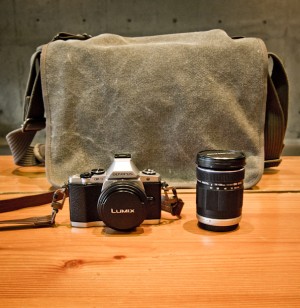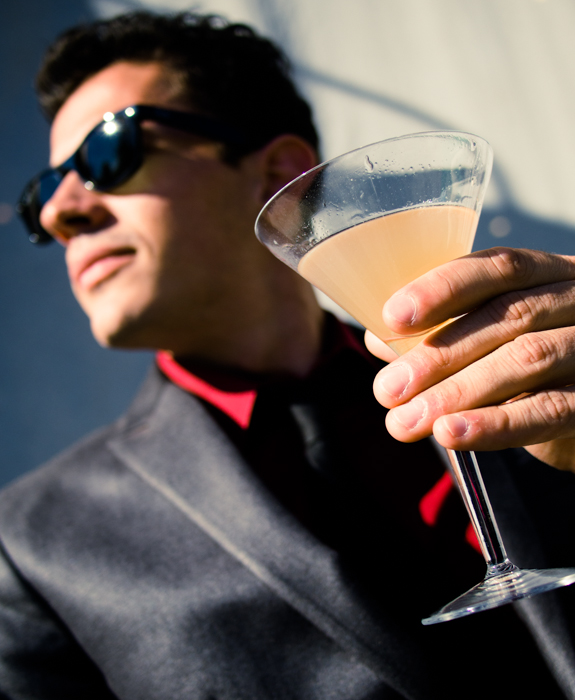One of the most common questions we hear from all of you is, “What is your everyday kit?” Our digital cinema guru, Erik, wanted to take a minute to chat gear with you and answer that question from his perspective. Please give him another warm welcome… This post is another installment of a series that our staff is doing about the gear that we consider essential for our work…the stuff we don’t leave home without. -Chase
Thanks Chase. As I sit here on my couch writing this blog post, I’m surrounded by no less than 22 cameras in my living room alone. Some are decorations, some are used on occasion, some are only used for video shoots, and one gets used every. damn. day. I’m a collector [read: junkie] and I can’t get enough cameras, so when one becomes a regular fixture of my daily creative arsenal, it’s worth taking a moment to recognize its greatness. Right now that camera is the Olympus OMD E-M5. I picked mine up last may, and have since taken it around the world and shot the hell out of it. My kit consists of the E-M5 camera body, an Olympus 14-150mm f/4-5.6 lens and a Panasonic 20mm f/1.7 lens, all wrapped up in a Think Tank Retrospective 30 shoulder bag. It’s a simple setup, but it’s yielded results good enough for me to keep bringing it out of the house while my bigass DSLR kit stays on the shelf.
There’s a lot to love about the E-M5. It’s weather sealed, it’s got a slick retro design, and the image stabilization is like nothing I’ve ever seen before. But for me, the camera really shines in two categories: speed, and low light capability. Everything about this camera is fast, from the startup time to the autofocus to the frames per second it can fire. Even the layout of the buttons and dials make for a brisk shooting pace. In regards to low light, the image quality holds up quite nicely at high ISO’s. I don’t like to use a flash, so this is a huge bonus for me. ISO 3200 on the E-M5 looks like ISO 1000 on my Canon 7D, it’s crazy, and everything shot at ISO 1000 or lower looks the same, so grain and noise are rarely a concern. Throw the cameras insane 5 axis image stabilization into the mix [which allows for shooting at slower shutter speeds] and you can shoot in the dark with results like this [click to enlarge]:

This picture was shot at ISO 3200, f/1.7 at 1/13th of a second. If you can't do the photo math on that, trust me, it was dark.
Now let’s talk lenses. Keeping my kit lightweight is important to me, so I’ve paired it down to just two lenses; the 14-150mm zoom, and the 20mm pancake lens. The zoom lens keeps me covered for just about everything I want to shoot as long as there’s enough light. With the 2x crop factor on the E-M5’s sensor, it’s effective focal length is 28-300mm. That’s some range. Check out these shots from our recent trip to Villefranche for an example. They’re shot from the same spot using the same lens zoomed all the way out on the left, and all the way in on the right.
The only drawback to this lens is that its aperture is a little “slow”. The widest aperture on the lens is f/4, and f/5.6 when zoomed to 150mm. While that’s fine and good for bright landscapes, it doesn’t lend itself well for indoor or night photography. This is when I switch to the Panasonic 20mm f/1.7 pancake lens. This was the first lens I picked up when I started using a micro four thirds camera 2 years ago [the Panasonic GF1], and it might be my favorite lens of all time. It’s super sharp, it’s tiny, and it can see in the dark [as shown in the above photo of Mike Horn holding the giant wine bottle]. Its focal length is a sweet spot in my opinion. At 20mm, or 40mm equivalent with the crop factor, you can take a few steps closer to your subject and take a portrait with no weird lens distortion, or take a few steps back and get a wide shot with no lens compression. Here’s a portrait of Norton looking like a baller on Fancy Friday, shot with the 20mm:
And here’s a landscape from the Guardian Peak Winery in Stellenbosch South Africa, also shot with the 20mm:
The final component of this camera kit that I think is worth mentioning is the oh-so-classy Think Tank Retrospective 30 shoulder bag. Think Tank nailed the design of this bag with one simple characteristic that ALL other camera bag manufacturers need to take note of; it doesn’t look like a camera bag. There are no bigass logos anywhere to found, no hideous bright green interior, no giant awkward straps for securing tripods or trekking poles or whatever else you wanna weigh yourself down with. This bag looks like something your cool grandpa handed down to you after he retired from chasing his secretary around. The bag is smart too. I love the deployable “Sound Silencers” that cover up the velcro so you’re not the noisy photographer swapping gear in and out of their bag. The Retrospective 30 is my preference since it holds my camera body, lenses, batteries, and the occasional iPad with room to spare, but they make them in a wide variety of shapes and sizes, so check out their website to see if they have what’s right for you.
I hope you found something useful from this minimalist approach to photography. If you’d like to try any of this photo gear out, it’s all available to rent from BorrowLenses.com. Feel free to tell us about your walkaround kit in the comments section and, as always, keep snapping.
























You’re so awesome! I do not suppose I’ve read something like this before. So nice to find another person with genuine thoughts on this issue. Seriously.. many thanks for starting this up. This web site is something that’s needed on the web, someone with some originality!
If some one desires expert view concerning blogging
then i advise him/her to visit this web site, Keep up the nice job.
hello!,I really like your writing very much!
share we communicate extra about your plst on AOL?
I require an expert in this area to resolve my problem.
Maay be that is you! Having a look ahead too see you.
Hi every one, here every one is sharing such experience, thus it’s pleasant to read this blog, and I
used to pay a quick visit this web site every day.